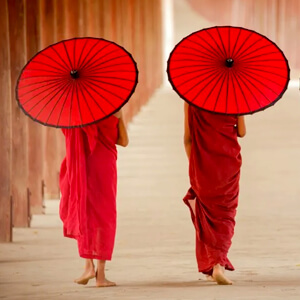Colours have this magical way of influencing our mood, thoughts and even decisions. It's not just about what looks good; it's about how it makes you feel! Take red, for instance. It screams
passion,
energy and
urgency. Think about sale signs - they're almost always red because it nudges you to act quickly.
Blue, on the other hand, whispers calmness and trust. Ever noticed how banks and tech companies love using blue in their logos? It's all about
building confidence and reliability. Colours can even affect your physical state. Research shows that
red can raise your heart rate, and
green has a soothing effect. That's why hospitals and health facilities tend to be greens and blues. But the power of colour doesn't stop at just emotions - it can shape behaviours too. Want to spark creativity? Surround yourself with yellow. Need to concentrate? A touch of green in your workspace can work wonders. For
fashion designers, knowing this about the psychological effects is like having a superpower. Imagine being able to create a fiery red dress, an instant attention getter, or a soft pastel outfit that exudes serenity. By mastering the psychology of colours, designers can craft collections which not only look great but also evoke their desired emotional responses in their audience. It's science and art all wrapped into one vibrant package. So, the next time you select a shade, ask yourself - what story does this color tell?












 CONTACT USWaves Institute of Fashion Designing,
CONTACT USWaves Institute of Fashion Designing,